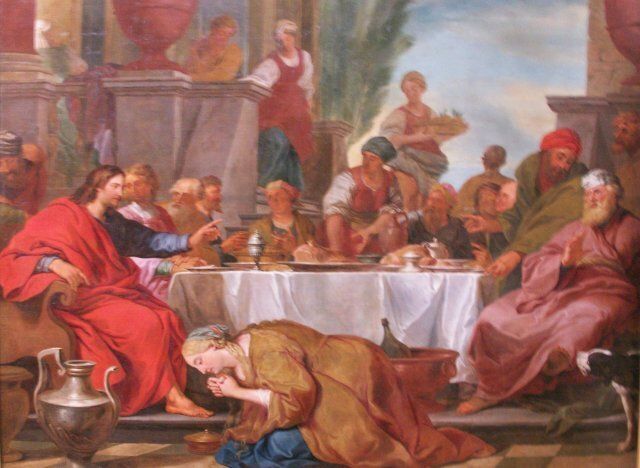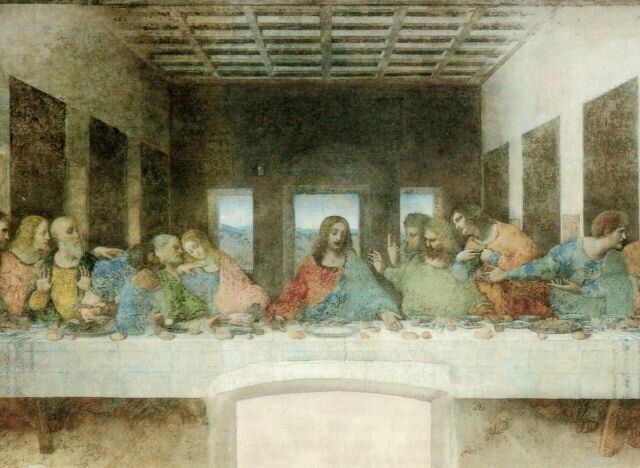A scrap of ancient papyrus containing dialogue in which Jesus explicitly refers to his "wife" has reignited debate over whether the Christian Messiah was married.
In a discovery that will further excite readers of The Da Vinci Code, the woman to whom Jesus refers to is called Mary, fuelling populist theories that Jesus may have been in a relationship with Mary Magdalene.
The fourth century fragment is written in ancient Egyptian Coptic, which uses the Greek alphabet, and is not much bigger than a credit card. It is thought to be a remnant from a gospel, though scholars are arguing over its origins.

The papyrus is thousands of years old and sees Jesus refer to his "wife" Mary
Unveiled by Harvard University Professor Karen King at a conference in Rome, she explained how the antique papyrus had been preserved by Egypt’s hot dusty climate.
Important both as a Christian text and historical document, King said the artefact is most significant in revealing ancient Christian attitudes towards marriage.
In the excerpt, the disciples are Jesus appear to be debating whether Mary is worthy. The text then says: "Jesus said to them, my wife. She can be my disciple."

King's translation of the Coptic text: taken from the Harvard University website
In a statement King said that the scrap "tells us that the whole question only came up as part of vociferous debates about sexuality and marriage.
"From the very beginning, Christians disagreed about whether it was better not to marry," she said, "but it was over a century after Jesus's death before they began appealing to Jesus's marital status to support their positions."
The New Testament is strangely silent over whether or not Jesus was married, an omission which has prompted hundreds of theories in the 2000 years since his death.
Debates over whether Jesus had a female companion are fiercely emotive as they suggest Jesus had sex. Historically Christians have been uncomfortable ascribing such corporeal desires to the son of God.
Allowing the Messiah a sex life also throws open the almost unthinkable possibility that Jesus could have had children. King has named the scrap which refers to the elusive Mary Magdalene, "The Gospel of Jesus' Wife."

Mary Magdalene washing Jesus' feet.
Of Jesus' (scant) female companions St Mary Magdalene has the most prominent role in New Testament writings. She is mentioned 12 times in the Gospels and was present at the Crucifixion, long after Jesus' male disciples had deserted him.
She is seen again at the tomb after Jesus is resurrected and is chosen by Him to go to the apostles and announce the Good News.
MORE ON THIS: Role of Women In The Early Church: A lot of the early churches in Rome were founded by women, paid for by women and dedicated to women, a role that has subsequently been played down.
Mary Magdalene (also known as Mary of Magdala) is primarily seen in the gospels accompanying Jesus and washing his feet.
However most people believe Mary was a prostitute, her pivotal role in the gospel story embodying the forgiveness and redemption Jesus offers to Christians from all walks of life.
Our perception of St Mary Magdalene as a prostitute is not based in gospel truth, but rather a series of mistakes, confusions and artistic licence that has seen Mary drawn as the elusive licentious apostle.

Mary Magdalene was drawn in Da Vinci's painting of the Last Supper. Jesus' own marital status wasn't a contentious issue until later Christians looked to his example to embody in their own lives
King believes the papyrus is a copy of an earlier document on Jesus, and appears to show connections with the Gospel of Thomas, the Gospel of Mary and The Gospel of Phillip.
Hundreds of gospels (which literally means 'good news') were written about the life of Jesus.

The conversion of Mary Magdalene by Caravaggio. It is said that seven devils had been cast out of her (Mark 16:9). Her sensuality was perpetuated through numerous Renaissance paintings.
The “canon” (official list) of 27 New Testament books was chosen from among numerous writings after the Roman emperor commissioned a bible in fourth century AD.
A private collector approached King for help translating the scrap, A chemical analysis of the ink will allow historians to age the text and further verify where relic came from.
But Bible scholar Ben Witherington III, a professor and author who teaches at Asbury Theological Seminary in Wilmore, Kentucky, advises caution over the discovery.
He believes the fragment may be a Gnostic text (an early Christian movement in the second cetury) and thinks that Jesus use of the word “wife" may refer to a different understanding of the role. He told Associated Press
"What we hear from the Gnostic is this practice called the sister-wife texts, where they carried around a female believer with them who cooks for them and cleans for them and does the usual domestic chores, but they have no sexual relationship whatsoever."
Some scholars have also suggested that Jesus may have been homosexual, pointing to Christ's intimacy with St John.